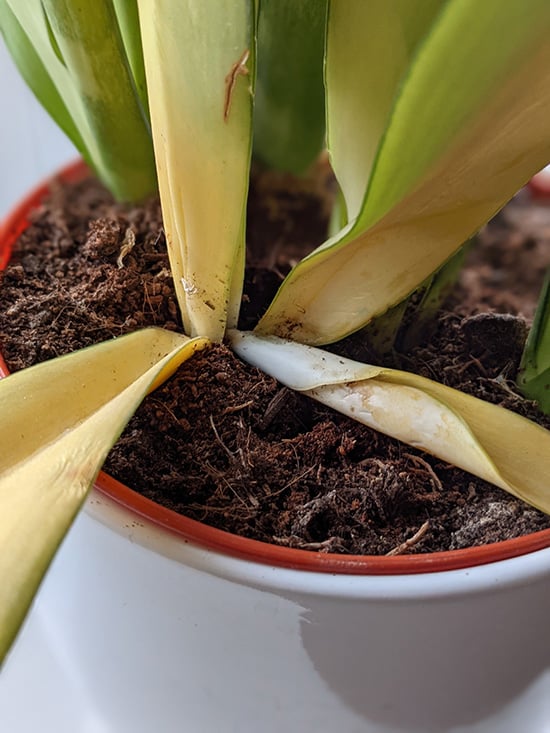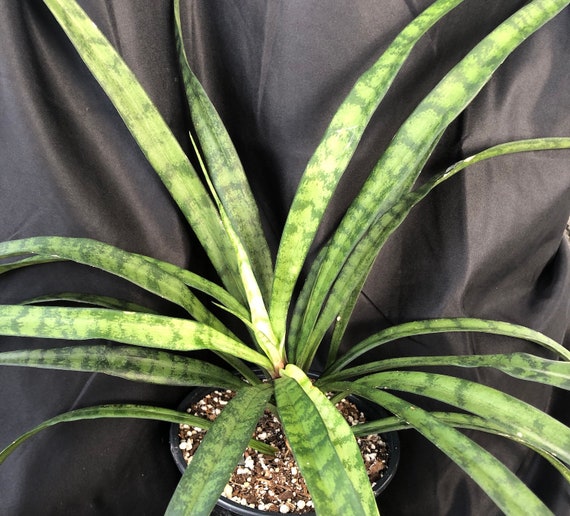Unknown Facts About Snake Plant Leaves Turning Yellow
Wiki Article
Snake Plant Leaves Turning Yellow Fundamentals Explained
Table of ContentsNot known Details About Snake Plant Leaves Turning Yellow Some Ideas on Snake Plant Leaves Turning Yellow You Should KnowThe Basic Principles Of Snake Plant Leaves Turning Yellow 6 Easy Facts About Snake Plant Leaves Turning Yellow ExplainedThe Ultimate Guide To Snake Plant Leaves Turning Yellow
Below are seven factors your serpent plant's fallen leaves could be turning yellow and exactly how to fix it. Several different plant issues can trigger yellow fallen leaves, or chlorosis. Chlorosis takes place when plants don't have the micronutrients they require to produce chlorophyll, that makes vegetation eco-friendly and permits plants to transform sunlight into food.Serpent plants are dry spell forgiving thanks to their succulent leaves. These plants grow ideal in loose, well-drained dirt that's allowed to dry totally between waterings and might only need water as soon as each month throughout winter months. Overwatering can protect against origins from soaking up wetness and nutrients that the plant needs and can also create root rot.
A potbound plant can't soak up nutrients from the dirt. If your snake plant is overcrowded or outgrowing its pot, this might be the reason for yellow leaves. An occasional yellow leaf is completely regular for a snake plant. As the plant ages, old leaves yellow, pass away, and drop off as they're changed with new ones.
Make sure the plant has intense, indirect light and continually cozy temperatures, and water just when the soil has actually totally dried. Maintain an eye out for problems and capture them early on to keep your plant looking healthy and lovely.
Facts About Snake Plant Leaves Turning Yellow Revealed
If the fallen leaves on your snake plant are getting soft, it's normally a sign of as well much water. Snake plants shop water in their leaves and if they're overwatered, the leaves can come to be soft and mushy. If you assume your serpent plant is being overwatered, allow the soil to dry entirely before watering once more.Yes, some yellowing is typical and to be anticipated on older leaves, especially as snake plants age. If the plant is otherwise healthy and the fallen leaves are only lightly yellowed then there is no reason for problem. However, if the leaves are dramatically yellowed or if there are other signs of distress after that it's best to take action.
Dead leaves can supply a home for parasites and conditions, which can then infect the rest of the plant. To remove a dead fallen leave, just cut it off at the base with a sharp blade or scissors. Make sure to disinfect your cutting tool in between cuts to stop the spread of disease.
In general, snake plants must be sprinkled every one to 2 weeks. If you believe your snake plant has been overwatered, the initial action is to quit sprinkling it.
Our Snake Plant Leaves Turning Yellow Ideas
With a little examination, you must have the ability to identify the reason and take actions to take care you can try here of the trouble and have a healthy snake plant.The snake plant is an amazing houseplant. The snake plant is one of those plants that are terrific for growing indoors in a terrarium, Serpent plants can expand rather big, but they likewise tend to be rather low-maintenance.
When the dirt is overwatered, the plant cells absorb more water than they can save. Read right here to Leaves come to be soaked and yellow as they absorb a lot more water. Drooping snake plant fallen leaves are triggered by soaked-up leaf cells losing their firmness. You might notice that your serpent plant will certainly end up being black or brown if the yellow patches are not fixed by fixing overwatering.
It is, therefore, much more likely that your plant will certainly identify yellow spots on its fallen leaves if you overfeed it with plant food during winter months. The fallen her latest blog leaves of serpent plants are also susceptible to yellowing when overfed, particularly if the roots are vulnerable. Repotting your yellowing, sprinkling just when the soil dries out, and supplying optimum temperature and light problems can conserve it.
8 Easy Facts About Snake Plant Leaves Turning Yellow Shown

Your can be eliminated by removing the yellow ideas. The trimmed leaves should expand longer if they are sprinkled effectively and have optimum light and temperature level conditions. It is very important to bear in mind that the pointed tips will certainly not grow back, creating them to stand out from the remainder of the fallen leaves.
It will not take long for the fallen leaves to regrow and expand like the healthy fallen leaves around them. At the same time, you can eliminate afflicted fallen leaves from the base of the plant. The shows that it's getting excessive or insufficient light or nutrients. The crucial message is to allow the serpent plant time to recuperate.

navigate to this website
An Unbiased View of Snake Plant Leaves Turning Yellow
A few of one of the most usual causes are noted below (Snake Plant Leaves Turning Yellow). Sansevierias like dry climates and prefer little water preserved at a gap of one or two times weekly in summer and month-to-month in winter months. Yet when the water dosage gets out of control, your Sansevieria will experience overwatering. The most common issue provided by overwatering is origin rot causing mushy roots and stems with a nasty smell.Report this wiki page